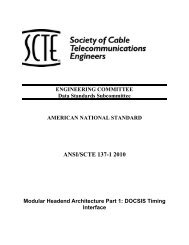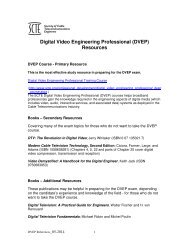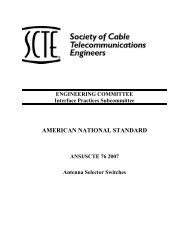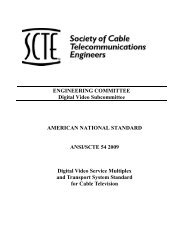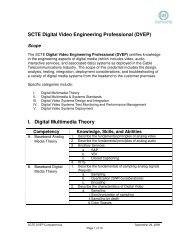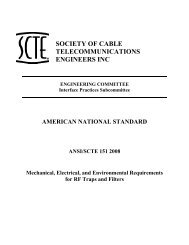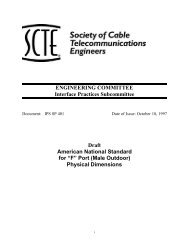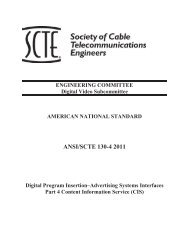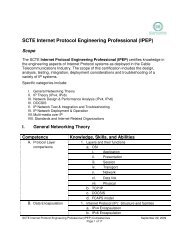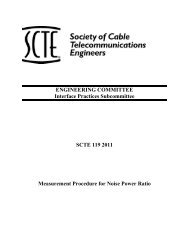ANSI/SCTE 16 2001R2007
ANSI/SCTE 16 2001R2007
ANSI/SCTE 16 2001R2007
Create successful ePaper yourself
Turn your PDF publications into a flip-book with our unique Google optimized e-Paper software.
Appendix 7 – Special Test Conditions/Considerations<br />
The test setup and procedure in this document detail a test methodology that is specific to<br />
devices in which the power enters and exits on the RF test ports. However, some test devices do<br />
not contain this configuration. Drop amplifiers are an example of a device that does not contain<br />
two RF/power ports. Typical configurations of drop amplifiers include use of only one<br />
RF/power port, or a dedicated power port and stand alone (no power passing capability) RF<br />
ports.<br />
Under circumstances such as the ones listed above, this procedure can be followed with minor<br />
test set-up modifications. If one or more RF ports of the DUT do not contain power passing<br />
capability, AC/RF power inserters/combiners are not required for those ports. They may be<br />
removed for testing purposes.<br />
For example, a DUT containing only one RF/power port would be tested using one AC/RF<br />
power inserter/combiner on the RF/power port, and an RF only connection on the other port. A<br />
DUT containing a dedicated powering port would not require AC/RF power inserters/combiners<br />
on the test ports, as they are not meant to pass power.<br />
A general rule of thumb when performing this test is to utilize AC/RF power inserters/combiners<br />
on any DUT port that shares RF and power passing capability. Otherwise, direct connections<br />
should be used. Additionally, the power load bank is not required on DUT’s without power<br />
passing capability. The procedure can be followed as stated with these minor changes to the test<br />
set-up.<br />
19



